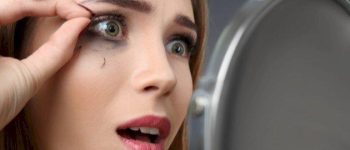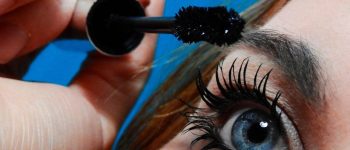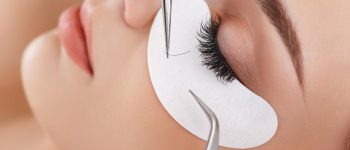The Eyelash Fern, also known as Actiniopteris Australis, is a fascinating plant that resembles a bundle of lime-green to dark-green eyelashes. Native to Réunion, Mauritius, this small growing fern thrives in warm and humid conditions, making it an excellent choice for terrariums and high humidity environments like kitchens or bathrooms.
If you’re looking to bring a touch of the tropics into your home, the Eyelash Fern is the perfect choice. While not difficult to grow, it does have specific requirements when it comes to humidity and soil. To help you avoid common mistakes and ensure your fern thrives, I’ve put together a handy guide on how to care for the Eyelash Fern.
Size & Growth
The Eyelash Fern is a compact plant, reaching a width of 8 inches and a height of 6 inches. Its slow growth rate allows for easy handling and maintenance. You’ll barely even notice it reaching its full size, which makes it ideal for terrariums or glass cloches. The preferred USDA hardiness zones for this fern are 10a to 11.
Light Requirements
The Eyelash Fern is not fussy when it comes to light. It can grow in partial shade to shade and thrives under filtered or indirect light. However, strong direct sunlight can scorch its delicate fronds, so it’s important to find a spot that provides protection from direct sunlight. While it can tolerate shady spots, partial shade is preferred to prevent leggy growth.
Watering
When it comes to watering, the Eyelash Fern has specific requirements. It enjoys moderate watering, which means keeping the soil slightly moist but avoiding overwatering. Too much water can cause root rot, especially if the soil requirements are not met. On the other hand, underwatering coupled with a lack of humidity can also harm the plant. To keep your fern happy, water the soil and allow the top layers to start drying before watering again. Avoid standing water and damp soil to prevent fungal issues.
Soil Type
The Eyelash Fern thrives in a substrate that allows for quick water drainage while being rich in organic matter. Slightly acidic soils with a pH level of 6.1-7.5 are preferable, but neutral soil works well too as long as it’s well-aerated. When potting your fern, use a mix that contains peat moss or sphagnum for moisture retention, perlite or sand for drainage, and garden loam for organic matter. Avoid using regular potting soil, as it tends to retain water and can lead to root rot.
Temperature & Humidity
Being a tropical plant, the Eyelash Fern requires warmth and humidity to thrive. It prefers temperatures between 64°F and 75°F. In regions where winter temperatures drop below 50°F, it’s best to move the fern indoors until spring. Avoid exposing the fern to sudden temperature changes or cold drafts, as it can cause damage. Additionally, high heat and direct sunlight can scorch the fronds, so it’s important to provide shade and increase watering during hot summer days. While the fern can adapt to average indoor humidity levels (40-60%), it prefers slightly higher levels around 70%. You can increase humidity by using a humidifier or an evaporation tray, which involves placing the plant on top of pebbles and water.
Fertilizing
The Eyelash Fern is a low feeder, so monthly fertilizing during spring and summer is sufficient. Use a weak solution that’s low in nitrogen to avoid burning the roots. Avoid using undiluted fertilizer, as it can cause root burn. However, you may choose to skip fertilizing without any negative impact on the fern’s well-being.
Potting & Repotting
Regular repotting benefits the Eyelash Fern, ensuring its optimal growth. Schedule the first repotting after 12 months, as the plant reaches its maximum size. Look for roots poking out of the drain holes as an indication for repotting. This also helps keep the potting mix fresh for the plant.
How to Propagate Eyelash Fern?
Propagating the Eyelash Fern is simple and can be done through division when repotting. Cut some clippings with fronds and rhizomes, place them in moist potting mix, and keep them in a warm and humid environment away from direct sunlight. The new divisions should receive 2-4 hours of bright but indirect light per day.
Is the Eyelash Fern Plant Toxic?
The Eyelash Fern is toxic to cats and dogs due to the presence of Filix elements. These compounds can cause vomiting and diarrhea if ingested. To ensure the safety of your pets, keep the fern in a location inaccessible to them.
Why are Eyelash Fern Leaves Turning Yellow?
Yellowing leaves in the Eyelash Fern can be caused by too much direct sunlight, overwatering, or a lack of humidity. However, the most common reason is a lack of humidity. Check if your fern is protected from direct light and reevaluate its watering schedule to eliminate potential causes of yellowing leaves.
Why is the Eyelash Fern Plant Wilting?
Wilting in the Eyelash Fern can be due to overwatering or a lack of humidity. Overwatering can lead to root rot, preventing nutrient absorption and eventually causing the plant to die. A lack of humidity can cause the fronds to droop. Additionally, sudden temperature changes can induce temperature shock and cause wilting. Ensure humidity levels, watering, and temperature are within acceptable parameters for the fern.
Wrapping Up
The Eyelash Fern is a compact and perennial tropical fern that thrives in terrariums or under a glass cloche. It can also be grown in steamy bathrooms or kitchens to meet its high humidity requirements. Pay attention to soil and watering requirements, as they are crucial for the plant’s well-being. Remember, warmth and high humidity are key to successfully growing the Actiniopteris Australis indoors. If indoor humidity levels are low, consider using a humidifier or an evaporation tray to increase humidity around the plant.
For more gardening inspiration and information, visit Ekilove. Happy fern growing!




